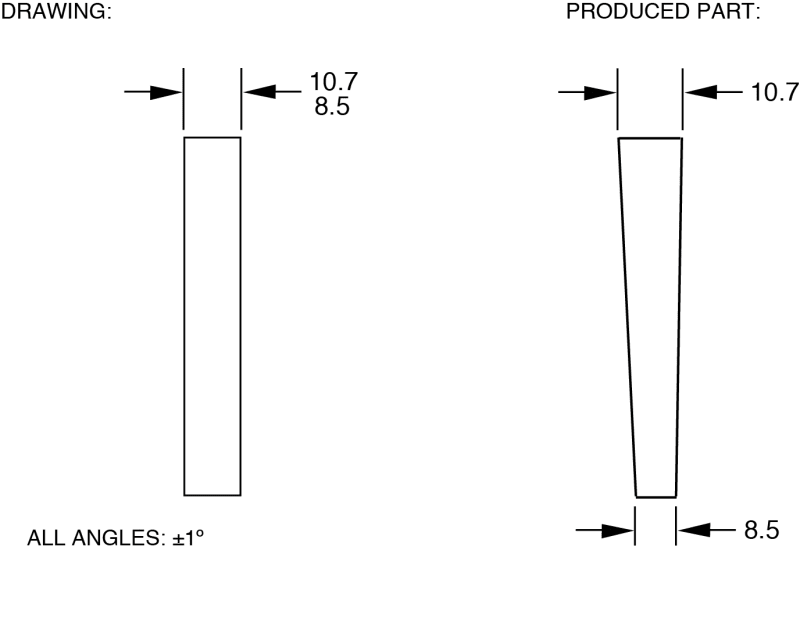If a feature of size tolerance is large enough, can it vary in form to a degree such that the angle between surfaces can be larger than an "UNLESS OTHERWISE SPECIFIED" block angle tolerance allows…?
In addition to Rule #1, can/must form also be limited by block
angle tolerance? Another way I've posed the question is to consider a cylindrical feature with a liberal size tolerance. Does a block angle tolerance impose a cylindricity-like refinement due to the limits on the implied 90° angles depicted on the drawing?
In addition to Rule #1, can/must form also be limited by block
angle tolerance? Another way I've posed the question is to consider a cylindrical feature with a liberal size tolerance. Does a block angle tolerance impose a cylindricity-like refinement due to the limits on the implied 90° angles depicted on the drawing?


